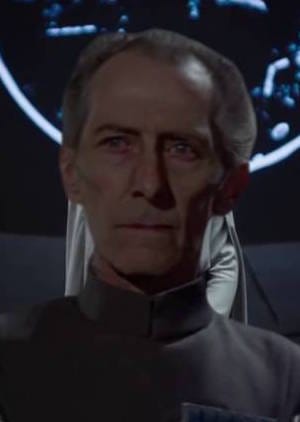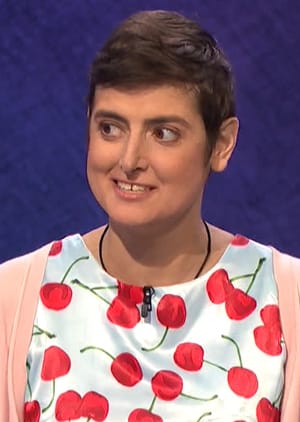|
Writing about Facebook profiles as memorials to the dead, Patrick Stokes notes that “our social identities are not necessarily coextensive with the biological life of the individual human organism with which they are associated, and thus it is not the memory of the dead person that is being honored and sustained through this form of memorialization, but some dimension or extension of the dead person themselves” (367). This is part of a growing body of literature that has coalesced around the agency of the dead — an agency facilitated specifically through durable, mediated representations of formerly living bodies. My research is rooted in a sizable patch of this, but I’m commenting on some of it here because of a couple of nifty examples encountered just this week — mediated, shared, and hyped performances by two public figures who are no longer alive. (Warning: a few minor “Rogue One” spoilers lie ahead.) “Rogue One,” the new “Star Wars” movie spinoff, features an impressive performance by Peter Cushing — impressive not only for its remarkable gravitas in context but especially because Cushing died 22 years ago. Without the benefit of digitizing the actor’s physical body in a Light Stage or similar processes, the filmmakers opted for now-standard methods of performance-capture (casting a British TV actor as the digital stand-in, sort of a twist on David Prowse’s more analog method of animating an Imperial character) and the retooling of existing footage of the late British actor.
Given its narrative timeline, it was smart to include Cushing’s character, Grand Moff Tarkin, in this new film. What’s intriguing about the performance, though, is that it’s just that: a performance. Tarkin appears in three scenes, taking part in substantial dialogue. This alone elevates the digital character above the usual cameo special-effect spectacle (though “Rogue One” does end with a separate one of those!) increasingly routine in films well beyond scifi. Can we claim for the “Rogue One” Tarkin appearance an extension of Peter Cushing’s mortal agency? Applying actor-network theory through Bruno Latour and others, or Alfred Gell’s related theory of nonhuman agency, I’ve claimed before that virtual bodies cannot (always) be denied the same abilities and powers for action as physical bodies. Even without a link to any intent on the part of its original human person, a digital doppelganger can create change in the world — be it the posthumous digital extension of Tupac Shakur’s earning potential by his estate or the mortality-questioning musings of a digital pop star with no corporeal antecedent at all. Still, what impact is Tarkin 2.0 making on the world? He has generated discourse, a surprising amount of which has been highly critical, with some claiming this representation as a watershed moment in the uncanny valley: “Perhaps we’re witnessing the first setback for that nascent industry that aims to keep us going digitally long after we’ve snuffed it.” Is chatter enough to count this as an encore duly and posthumously attributed (despite the largely invisible labor of the re-presentation’s production) to Cushing? Perhaps. We saw a richer example of such mediated, posthumous agency this week on the trivia game show “Jeopardy!” Last night, Cindy Stowell concluded a six-game winning streak, earning more than a hundred thousand dollars, all of which she donated to cancer research — because she competed on the show while suffering from stage-IV colon cancer, and she died a week before the prerecorded shows began airing. Thanks to this mediated presentation, however, Stowell herself — not just a representation of her — has continued to live and act in the world. Instead of a multimedia digital resurrection, per the previous examples, Stowell’s specific televisual appearance extends her agency beyond her death. This has occurred in some goose-bumpy personal ways. For instance, Stowell and her partner did not tell some family and friends whether she won or lost on the running competition; thus, those people have been watching this week with the rest of the viewers, eager to see how long she survived , as it were, and how it all turned out. (Schrodinger’s cat-egory, please, Alex.) This also has occurred in some broader ways — generating discourse, too (far more affective than critical, in this case, such as the widely shared amazement that Stowell competed while ill, feverish, and on painkillers), but also generating real action: donations to cancer research have seen a healthy bump amid these revelations. Host Alex Trebek concluded last night’s episode with a now widely circulated memorial statement about Stowell’s accomplishment, and the show has posted a moving video of Stowell talking about her experience here. Embedded in this situation is something — maybe it is Stowell’s pre-death intent about her appearance and donation example — that elevates her mediated representation from physical object to electronic subject. Joohan Kim has argued for phenomenological criteria that make digital beings as ontologically sound as corporeal ones. In certain cases, he claims, digital beings are more than mere signs. They act; therefore, they are. “In other words, digital-beings exist not only as a sign for other things, but they also exist for themselves,” he writes (92), aligning “digital beings” — among Heidegger’s three types of representation — with “bodily presence,” a reality in which the thing stands for itself. Stowell’s posthumous mediated existence stands for itself, creates new ideas, acts in the world. Per Stokes' observation above, Stowell's TV appearance and its resulting generative discourse extends her person in the world. Her social identity continues via this delayed mediation — most of us met her through this channel, and of that set of viewers many acted based on only that meeting between living physical and dead digital actors. Stowell's electronic existence did not enshrine previous memories of her life, it created and archived new ones. At the end of a year marked by significant celebrity deaths and other losses, Stowell’s particular mediated exit strategy is a remarkably inspirational one.
1 Comment
|
this blahg
I'm THOMAS CONNER, Ph.D. in Communication & STS, and a longtime culture journalist. Categories
All
Archives
June 2024
|



 RSS Feed
RSS Feed